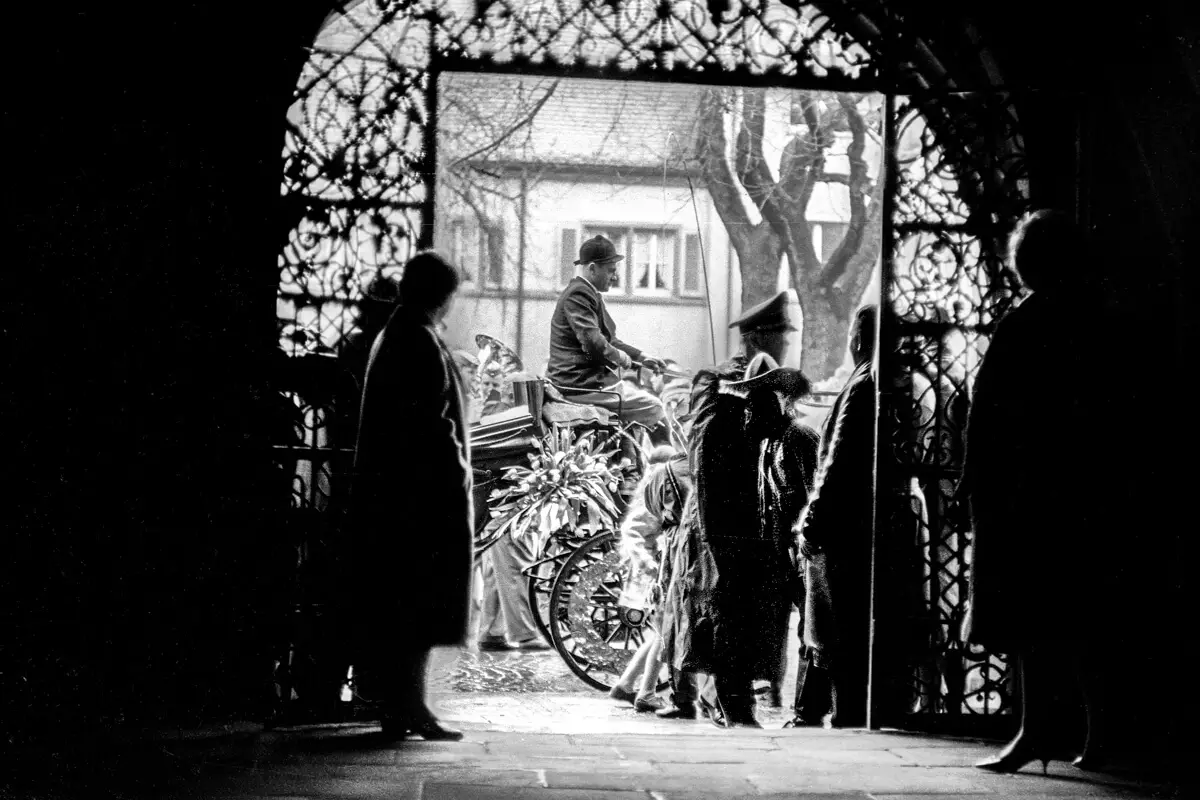Way back in 1963, in the early years of my photojournalism career, a German friend of mine who was about to emigrate to the US persuaded me to join him on a visit to his homeland in early February.
‘It’s the season of Der Fasching,’ he explained excitedly. ‘Everyone dresses up, there are big street parades and a lot of drinking…‘ There was not a lot not to like, so we flew from London to Dusseldorf and then south to the historic city of Freiburg-im-Breisgau, the heart of the Black Forest country and steeped in ancient Germanic traditions preserved fiercely by the locals.
In other countries, it’s called Carnival and in other parts of the German-speaking world, it’s also known as Karneval, Faschnet, and other handles — the final binge-up before lockdown for Lent, with the climax coming on Rose Monday and Shrove Tuesday.
Back in those days, only 18 years after the end of the Second World War, many Germans were still very fragile about accepting Brits. Freiburg was particularly so, as the city and particularly its university had been a hotbed of Nazism. We had to tread carefully after getting off the train on a wet, dark, grey and miserable Rose Monday morning, following the crowds already hustling towards the centre and its beautiful town hall – the Rathaus.
Already the various parade groups had assembled, the King of Carnival was about to arrive in a horse-drawn landau, and the traditional battle cries of ‘helau’ and ‘helaf’ being bellowed out through the narrow paved streets, lined in the main square by both mounted and unmounted characters in the garb of the early 1800s century military, known as the corps societies.
A mock government of 11 ‘Fools’ elected to oversee the pageantry together with the King and Queen of Carnival were assembling on the balcony of the Rathaus and responding to the thousands of revelers below, attired in costumes ranging from traditional garb and carved masks associated with the forest spirits to more modern get-ups.
It was a photofest with a multitude of opportunities for me and my precious brand new black-bodied Pentax SV, which had been one of the first imported into the UK, and 28mm and 85mm lenses using ADOX KB 17 Ortho-Panchromatic B&W film. The five shots I have chosen from that memorable day nearly 50 years ago were all on the 24mm.
~ Jeremy
Submit your 5 Frames… today
Get your own 5 Frames featured by submitting your article using this form or by sending an email via the contact link at the top of the page.
Share your knowledge, story or project
The transfer of knowledge across the film photography community is the heart of EMULSIVE. You can add your support by contributing your thoughts, work, experiences and ideas to inspire the hundreds of thousands of people who read these pages each month. Check out the submission guide here.
If you like what you’re reading you can also help this passion project by heading over to the EMULSIVE Patreon page and contributing as little as a dollar a month. There’s also print and apparel over at Society 6, currently showcasing over two dozen t-shirt designs and over a dozen unique photographs available for purchase.













3 responses to “5 Frames… Of Adox KB 17 during ‘Der Fasching’ at the heart of the Black Forest in 1960s Germany (35mm / EI 100 / Asahi Pentax SV + 28mm f/3.5 Super-Takumar)”
Great pictures and a fascinating slice of history. Thanks.
Is no one going to mention the UFO above the kid in the Sombrero?
Whaouuuu : great!
Thank you !
I love these images